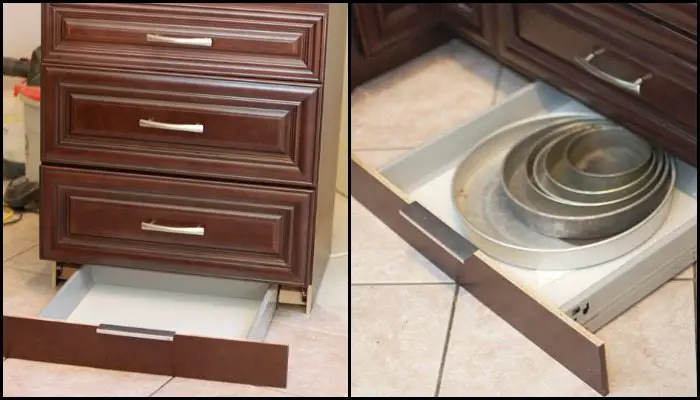Can’t seem to have enough kitchen storage space? Well, how about making use of the toe kick – that area between your cabinet’s base and the floor?

Most people usually overlook this part of the kitchen but it offers valuable storage space that many of us need! By making toe kick drawers, you’ll have the perfect storage area for kitchen equipment that you do not frequently use. You can also store miscellaneous supplies such as plastic cutlery and unopened packs of table napkins.
You can definitely do this storage solution to existing cabinets but it’s a lot easier when installing new ones.
Of course, toe kick drawers can also be installed in other parts of the home such as the bathroom. You can even use them as a secret storage space!
Do you have a cabinet that could use this additional drawer?
If you need this clever storage solution check our album or click on the link below it for step-by-step instructions.
Contents
Building a Toe Kick Drawer
Materials
- Ikea Rationell Drawer Kit
- Scrap Wood
- 1-1/2″ Wood Screws
- Drawer Hardware
Tools
- Measuring Tape
- Marker
- Drill
- Miter Saw
- Table Saw
- Small Carpenter’s Square
Instructions
Step 1: Measure the Available Space
- Use the measuring tape to measure the height, width, and depth of the toe kick area where you plan to install the drawer. Ensure you have enough clearance for the drawer to open smoothly.
Step 2: Prepare the Drawer Kit
- Unpack your Ikea Rationell Drawer Kit. Check the kit for all necessary parts and read through any provided instructions.
Step 3: Cut the Wood
- Using the measurements from Step 1, cut your scrap wood to create the drawer box if the Ikea kit needs adjustment or reinforcement. Utilize the table saw for straight cuts and the miter saw for any angled cuts.
Step 4: Assemble the Drawer
- Assemble the drawer according to the Ikea kit instructions. If you’ve cut additional wood for reinforcement, attach these using the wood screws and ensure everything fits snugly without warping or gaps.
Step 5: Install Drawer Slides
- Attach the drawer slides from the Ikea kit to the sides of the drawer. Use the drill and wood screws, ensuring they are aligned straight using the small carpenter’s square.
Step 6: Prepare the Toe Kick Space
- If the existing toe kick cover is not removable, you may need to cut it out using the table saw. Be precise and keep the cut-out piece to use as the drawer front.
Step 7: Attach the Drawer Hardware
- Fix the drawer pulls or knobs to the front of the drawer. This might be the piece cut from the toe kick or a part of the Ikea drawer front.
Step 8: Fit the Drawer
- Slide the drawer into the toe kick space to ensure it fits. Adjust the slides as necessary, making sure the drawer opens and closes smoothly.
Step 9: Secure the Drawer
- Once everything is aligned and functioning well, secure the drawer in place by screwing through the drawer slides into the cabinet base. Double-check that no screws protrude where they can interfere with the drawer mechanism.
Step 10: Attach the Toe Kick Front
- Attach the toe kick piece (or the front panel from the Ikea kit) to the front of the drawer. Ensure it sits flush with the rest of your cabinetry for a seamless look.
Step 11: Final Checks
- Give the drawer a few tests pulls to ensure the hardware handles the weight and the drawer slides smoothly without snagging.
Click on any image to start lightbox display. Use your Esc key to close the lightbox ![]()
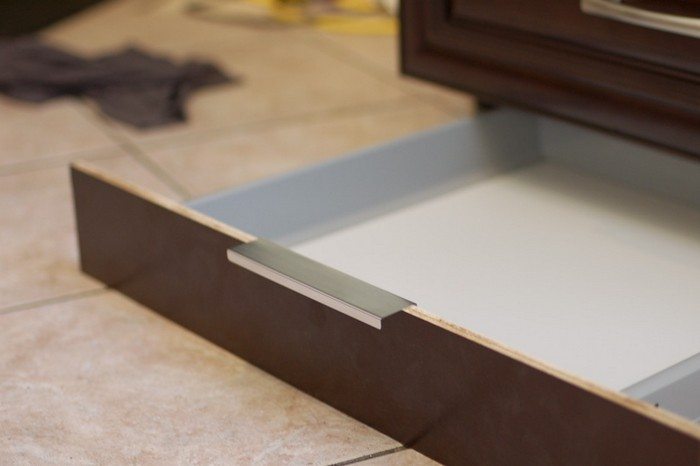

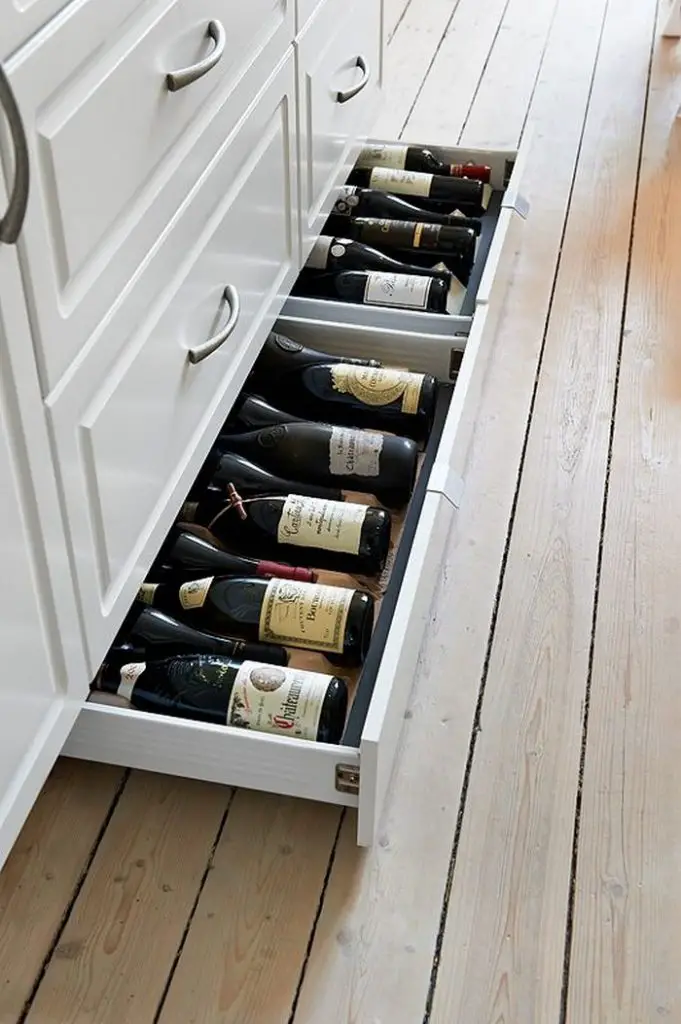
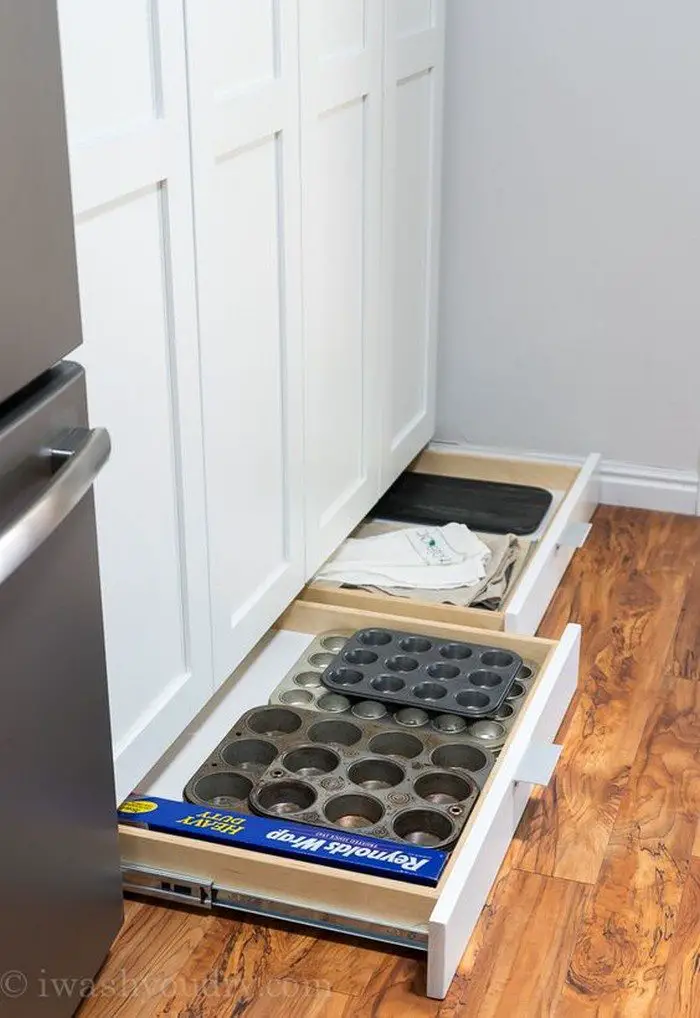
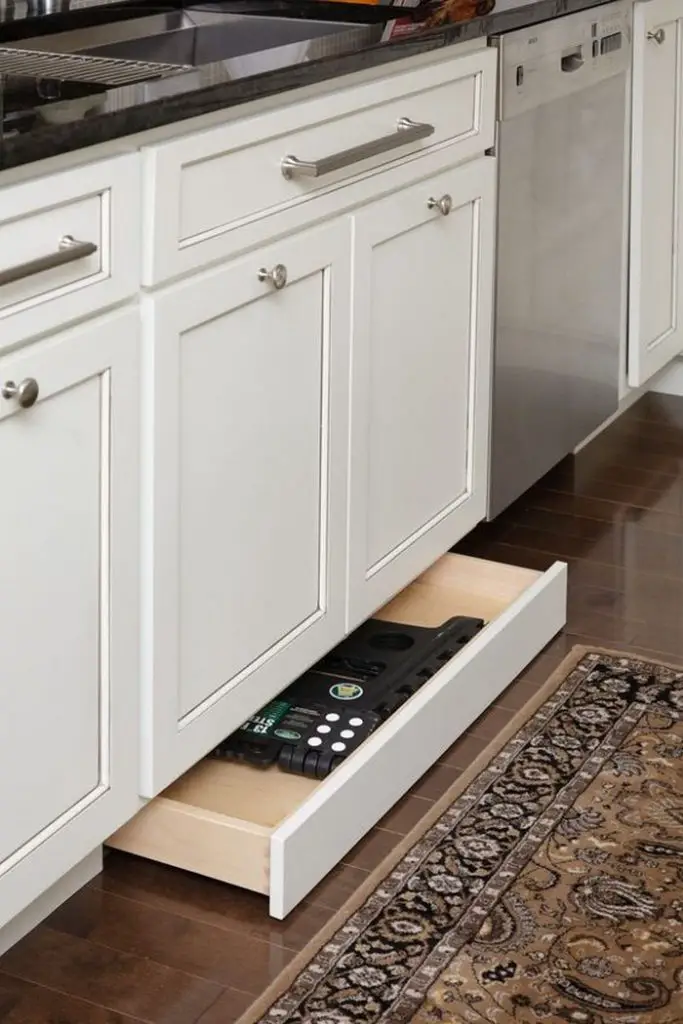
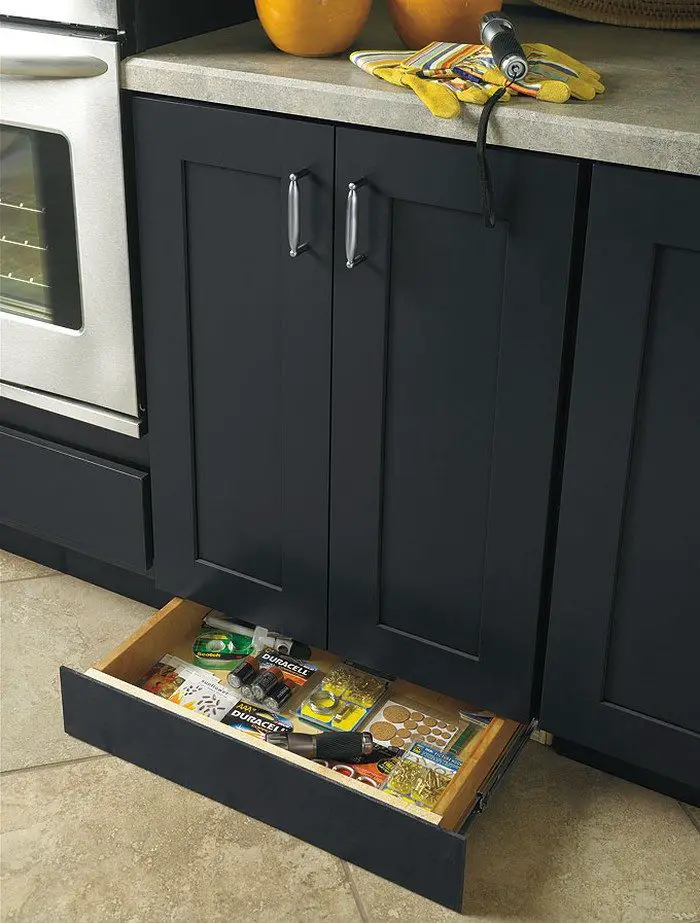
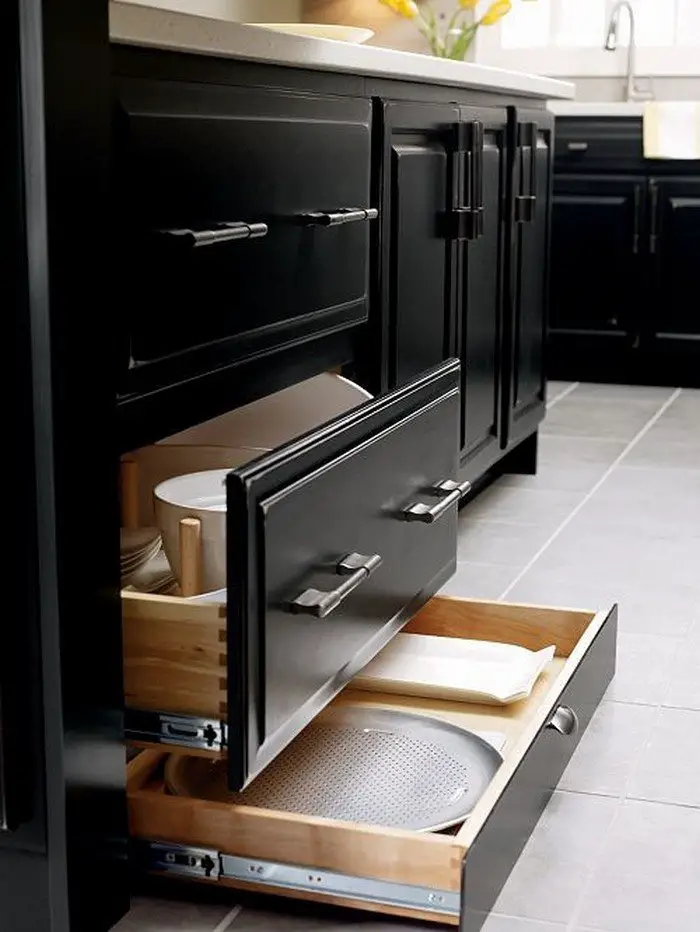
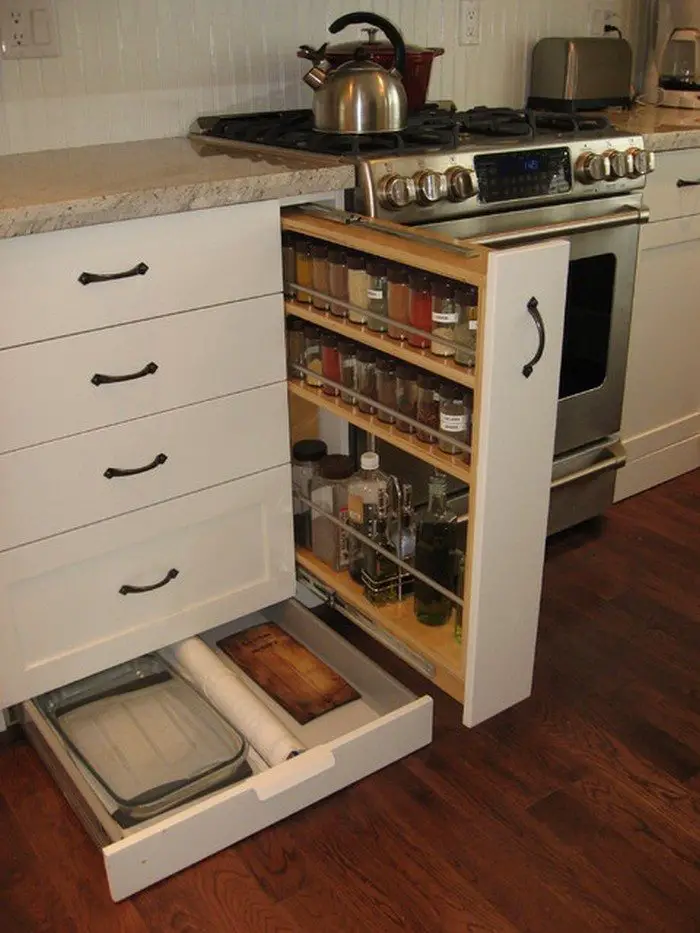
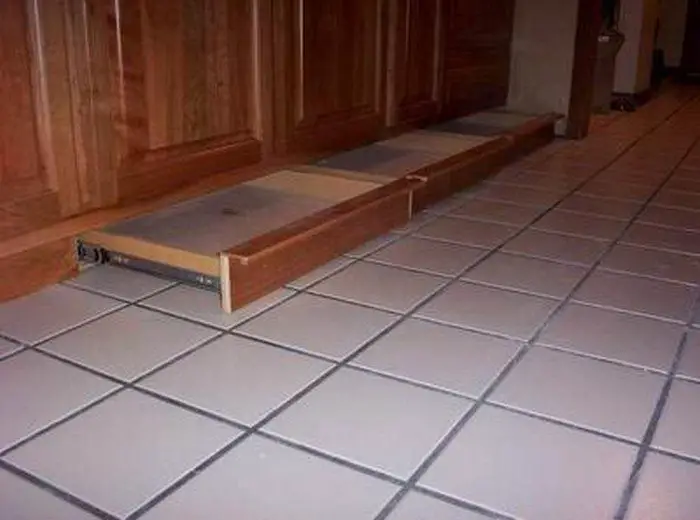


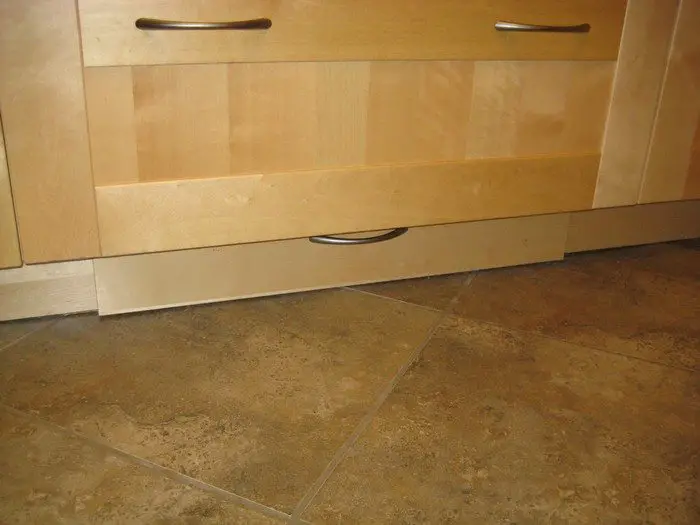
You can get more step-by-step instructions from Tikkido over here…
Design Considerations for Toe Kick Drawers
Toe kick drawers are a clever addition to any kitchen, optimizing unused space to increase storage. These hidden drawers are installed in the recess at the base of cabinets, usually unnoticed but incredibly useful. Here are some key design considerations to keep in mind when planning to install toe kick drawers.
Matching Your Cabinetry
When designing toe kick drawers, it’s essential to ensure they seamlessly blend with the existing cabinetry. The drawer fronts should match the color, style, and finish of your cabinets to maintain a cohesive look. This detail is crucial as it helps the toe kick drawer to remain discreet and integrated into the kitchen design.
Size and Proportion
The dimensions of your toe kick drawer should be carefully planned. Standard toe kick heights are usually 3 to 4 inches, but this can vary depending on the cabinet design. The width of the drawer can span multiple cabinets or be limited to the width of a single cabinet, depending on what needs to be stored. Ensuring the drawer is proportionate to the cabinetry not only enhances aesthetic appeal but also ensures structural integrity.
Accessibility and Convenience
Although toe kick drawers are low to the ground, they should still be easily accessible. Consider the handle or opening mechanism; magnetic push-to-open hardware or a recessed lip can work well to maintain the clean lines of your kitchen while ensuring the drawer is easy to open. The drawer should slide out smoothly and offer easy access to its contents, making everyday tasks more convenient.
Durability and Load Capacity
Toe kick drawers should be designed to withstand regular use and the weight of the items stored within them. It’s important to choose durable materials and hardware that can handle the drawer’s load. Reinforcing the drawer’s structure may be necessary, especially if you plan to store heavier items. Ensuring that the toe kick drawer is as robust as it is discreet will contribute significantly to its functionality and lifespan.
Material Choices
The choice of materials for your toe kick drawer not only affects its appearance but also its durability and maintenance. For kitchens, materials that are resistant to moisture and easy to clean are preferable. Using high-quality plywood or MDF can provide the necessary stability and can be finished to match your existing cabinets. For a more luxurious finish, consider materials like solid wood, though these may require more maintenance.
Safety Features
Safety is a critical aspect, especially in homes with small children. Including safety locks or child-proof mechanisms can prevent unwanted access to the contents of the toe kick drawer. Additionally, soft-close drawer slides can be a wise choice to prevent the drawer from slamming shut, reducing the risk of pinched fingers and noise.
Ventilation and Heat Considerations
If the toe kick drawer is located near appliances like dishwashers or ovens, consider the implications of heat and moisture. It might be necessary to include ventilation within the drawer design or use materials that are less affected by temperature changes to ensure the longevity of both the drawer and its contents.
Custom Organizers
To maximize the functionality of toe kick drawers, custom organizers can be built in. Dividers or modular trays can help keep contents sorted and easily accessible. This is particularly useful for storing smaller items that could otherwise become cluttered, such as cleaning supplies, kitchen gadgets, or even baking sheets.
Aesthetic Integration
While the toe kick drawer is designed to be discreet, its visual integration into your space is important. Consider the shadows and lighting in your kitchen. Adding a subtle toe-kick lighting beneath the cabinets can enhance both the functionality and aesthetics, making the drawers easier to use while creating a modern look.
Incorporating these design considerations will help you maximize the utility and aesthetic appeal of your toe kick drawers, making them a valuable addition to your kitchen or any room requiring extra storage.
Advanced Customization Options for Toe Kick Drawers
Toe kick drawers are an innovative solution for maximizing storage space in areas typically overlooked in home design. To elevate their functionality and aesthetic, consider these advanced customization options that can tailor the toe kick drawer to your specific needs and style preferences.
Custom Fit and Finish
The ability to customize the fit and finish of your toe kick drawer allows for a seamless integration with your existing cabinetry. Custom veneers or laminates can be applied to match the wood grain or color perfectly. Additionally, consider custom dimensions that can be adapted to unique spaces or specific storage needs, ensuring every inch of available space is utilized efficiently.
Innovative Opening Mechanisms
Traditional handles may not always be suitable for the sleek design of toe kick drawers. Opting for push-to-open mechanisms or recessed grips can maintain the minimalist look while ensuring easy access. For a high-tech approach, consider installing automated systems that open the drawer with a tap of the foot sensor, enhancing the functionality without compromising on style.
Interior Organizational Systems
Maximize the storage potential of your toe kick drawer by incorporating custom organizational systems. Adjustable dividers, pull-out trays, or peg systems can be designed to hold specific items securely, making the drawer not just a storage space but a highly organized utility feature. This is particularly useful for storing kitchen tools, cleaning supplies, or even shoes in a mudroom.
Enhanced Durability Options
For toe kick drawers subjected to frequent use, enhancing durability is key. Choose high-grade materials like heavy-duty steel for the drawer mechanisms and reinforced composite materials for the drawer itself to withstand wear and tear. Additionally, applying a protective coating can guard against moisture and scratches, extending the life of the drawer.
Eco-Friendly Materials
For those conscious about environmental impact, selecting eco-friendly materials for your toe kick drawer is an excellent option. Recycled materials, sustainable woods, or low-VOC finishes can reduce your carbon footprint while providing a durable and aesthetically pleasing storage solution.
By exploring these advanced customization options, your toe kick drawer can transcend its basic functionality to become a tailored, innovative feature that enhances both the utility and design of your home.
Conclusion
A useful addition that deftly makes use of underutilized area to improve storage and organization in your house is adding a toe kick drawer. A little imagination and the correct materials and tools can allow you to design a unique solution that will look great with your current cabinetry. This idea gives your living area a little inventiveness in addition to value.

